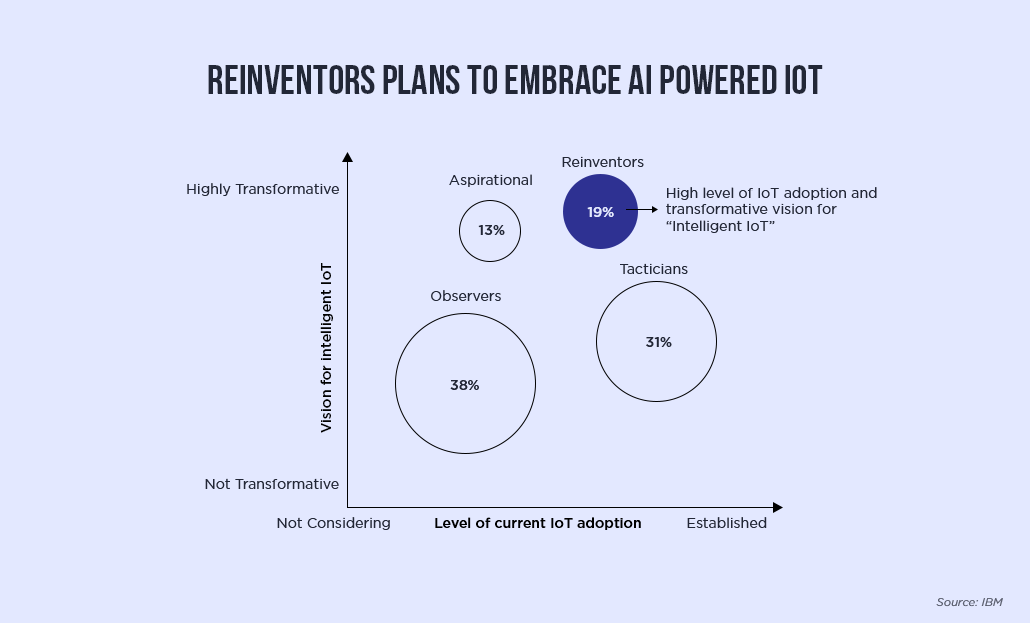10 Steps Towards AIoT
With the advent of personal computers and smartphones, the World Wide Web is now literally at our fingertips.
In the last ten years, we’ve seen the proliferation of “smart” technology, from LEDs to smart cars to CCTVs to smart bulbs. Along with this, people have grown accustomed to using automated vehicles and urban areas.
What Is IoT?
The term “Internet of Things” (IoT) refers to a network of “things” that are equipped with electronics, software, and network connectivity so that they may share data with other devices and systems online. These gadgets vary from the commonplace to the highly specialized. IoT has rapidly risen in prominence over the past several years to become one of the most consequential innovations of our time. Now that everything from kitchen appliances to vehicles to thermostats to baby monitors can be connected to the internet via embedded devices, there is no longer any barrier to the flow of information among humans, computers, and the physical world.
By 2024, there will be more than 43 billion devices online, all contributing to the creation, distribution, and utilization of information.
So, here’s a rundown of a few of the most important trends that could influence our approach to these gadgets in the future year.
Read: Alteryx Launches New Alteryx AiDIN Innovations to Fuel Enterprise-wide Adoption of Generative AI

10 Steps Towards AIoT
- AI and IoT technology enable accurate communication through embedded sensors, allowing robots to quickly adapt to new settings. This streamlines manufacturing and saves money.
- Wearables, such as fitness trackers, smartwatches, panic buttons, remote monitoring systems, GPS trackers, and music systems, are now prevalent in the AI landscape. These devices are vital to the IoT ecosystem and provide reliable data via smart device IoT apps.
- A smart city includes smart traffic management, parking, trash management, policing, government, and other issues. The Internet of Things for smart cities transforms how cities run and provide public services like transportation, healthcare, and lighting. Smart cities may be futuristic and have much to cover.
- IoT AI analyzes constant data streams and finds patterns. Machine learning and AI can also predict operation circumstances and identify parameters that need to be changed for optimal results. Thus, intelligent IoT reveals which procedures are redundant and time-consuming and which can be optimized. Google uses AI and IoT to lower data center cooling costs.
- IoT and AI enable businesses to quickly process and analyze data to generate new products. Rolls Royce aims to use AI for IoT-enabled aviation engine repair. This method will help identify trends and operational insights.
- IoT devices include smartphones, high-end computers, and sensors. Low-end sensors in the most typical IoT ecosystem generate massive amounts of data. AI-powered IoT ecosystems review and summarize device data before sharing it. It simplifies massive data sets and connects many IoT devices. This is scalability.
- Self-driving cars are the greatest AI+IoT system in real life. These autos can predict pedestrian movements and recommend cognitive sensing machine actions. It helps determine the best driving speed, time, and route.
- AIoT is used in car maintenance and recalls. AIoT can detect part failure and perform service checks by combining data from recalls, warranties, and safety agencies. The manufacturer increases customer trust and loyalty as vehicles become more reliable.
- Quality healthcare aims to reach all communities. No matter the size or sophistication of healthcare systems, doctors are under more time and task strain and seeing fewer patients. Providing high-quality healthcare while managing administrative burdens is difficult.
- Retail analytics uses camera and sensor data to track and forecast customer behavior in a physical store, such as checkout times. This helps determine staffing levels and boost cashier productivity, enhancing customer happiness.
Recommended AI News: Cloudflare’s R2 Is the Infrastructure Powering Leading AI Companies
Conclusion
The Internet of Things (IoT) is a popular term this decade that refers to the rapidly expanding systems of interconnected, networked, and communicative physical objects. AI and IoT enable firms to assess, predict, and automate all types of hazards for quick response. This helps them manage financial loss, personnel safety, and cyber dangers.
[To share your insights with us, please write to psen@martechseries.com]

Comments are closed.